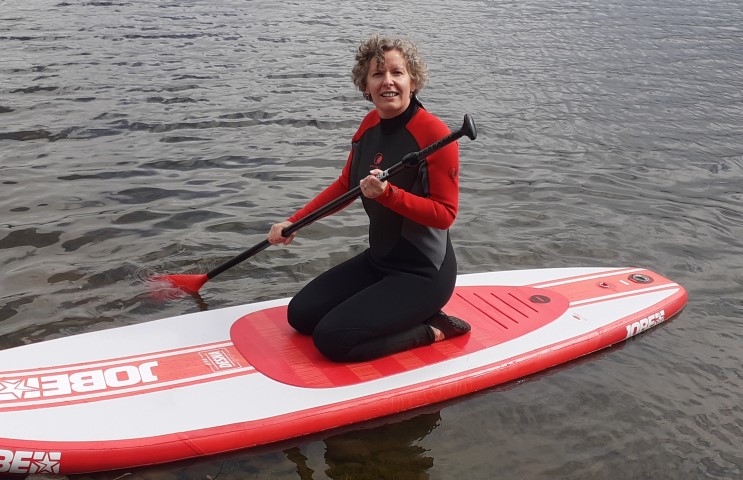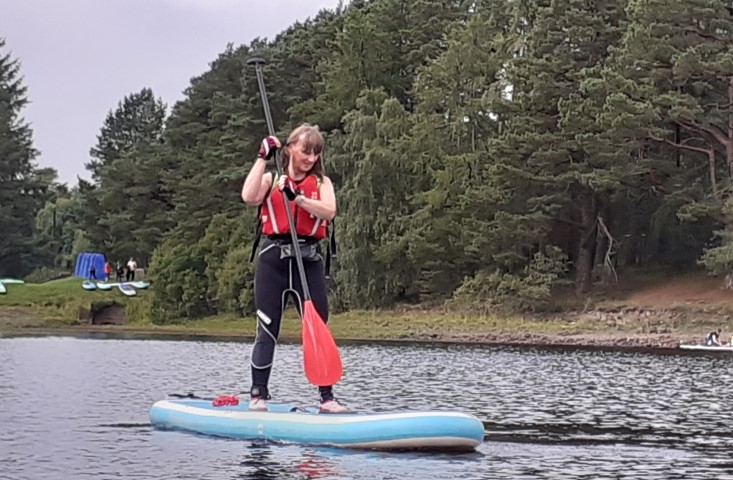4 reasons why you may struggle with balance on a SUP – and how to fix it
Keeping your balance on a Paddleboard when standing up can be a real challenge for many, especially beginners to SUP paddleboarding. Balance is something that many folks struggle with on a daily basis, whether it’s getting dizzy with heights or balance when walking from a cruise ship for example (done that one!).
However like many things in life, it is often just a simple matter of getting the technique sorted out – practice make perfect as they say.
If you struggle with balancing on your paddleboard when standing up (it’s not so much of a problem when in the kneeling position), then the good news is that it is a common problem – and one that is usually an easy fix.
Why can’t I balance on my Paddleboard?
There are a few reasons why you may be having trouble with your SUP, some ‘mechanical’ and some more mental or physical. Here are 4 points to consider that may be causing issues for you.
- Paddleboard dimensions: A common reason for instability is the simple fact that the paddleboard is the wrong dimensions for the user. Keep in mind that the wider the board then the more stable it will be in general terms. More than this, the taller the individual then the wider the go on board has to be to offer the same stability. A 34 inch wide board may suit you better than a 32” for example.
- Water conditions: Difficulty balancing could also be the simple fact that the water is too choppy! This often is the case especially when paddleboarding in the sea when the tides and winds make the surface difficult to manage on a paddleboard – even for the experienced user.
- Fear of falling: This is more common that you may think. Particularly if the user is not a good swimmer the fear of going overboard – irrational as it may seem to some – can in itself be a cause of trembling legs and general instability. I am a builder by trade and I often say to my customers DO NOT go up a ladder if you are fearful at all – the mere thought of the climb can cause ‘fear and trembling’ which may well result in a fall.
- Wrong positioning and/or stance on the paddleboard: Standing in the wrong place on the board can lead to all sorts of problems with balance and general mobility. Often it is as simple as changing your position on the board or your actual stance to regain perfect balance. This is especially the case in a short narrow board.

How to fix 4 SUP balancing issues:
Now that we have highlighted the issues that may be causing your loss of SUP balance, we can look at how the situation can be improved and you can be confident in your SUP exploration! Here are the issues explained in more depth point-by-point.
- Paddleboard sizes vary not only according to the individuals height and weight, but also by the board style or purpose. For example there are inflatable boards (the most popular) which tend to be on the thick side at about 6” (150mm) compared to the ridged or epoxy boards at around 4.5” (112mm). Rigid boards tend to be used by the more experienced boarder and especially for those involved with extreme boarding pursuits (yes you do get white-water boarding enthusiasts!). When choosing an inflatable then be sure to get a 6” thick board rather than a 4” which are fine for children. The thinner inflatables can sag in the middle with an adult creating the ‘taco’ effect – not a good look, and not good for stability! As for the length. As a general rule choose a board that is around 11 foot in length and 32-34 inches wide to help improve any balance issues.
- Water and wind conditions do impact SUP a LOT when paddleboarding. For the beginner then it is essential to feel confident on the board – and this is difficult to achieve if the waves are throwing your board around! Balancing in these conditions is something that may not be impossible, but nevertheless challenging to say the least until you have mastered the art of SUP on open water. One final tip here for those considering paddling in the sea – never go out if the wind is off the land or blowing out to sea. The result could be a call to the coastguard!
- Fear of falling in is common enough amongst many paddlers. This is mainly due to a lack of confidence or genuine fear of drowning. This can be countered very easily by starting your paddleboarding in shallow water where you are able to stand at waist height. Tell yourself this constantly in order for your subconscious mind to take it in. Furthermore fall in deliberately to help counter the fear of falling overboard. Remember this is in a water depth you are able to stand in. Practice getting back onboard from the water. Do this by making your way to the center of the board. Reach across and pull yourself up to a kneeling position with the oar across the front. Stand up when you have regained your balance and are confident. Finally, wear a buoyancy aid at all times in the water. Even experienced swimmers can suffer from cramps and get into real trouble in cold water especially. A buoyancy aid will give you confidence on the board to know that even if you do fall into deep water you will not go under and can get yourself back onboard.
- Positioning and stance is mega-important with regards to not only balancing but also general manoeuvrability. Stand too far forward and the board will sink to the front resulting in you ploughing into the water and causing general instability. Too far back and the board will rise to the front and ‘surf’ the water – again causing instability – not so good if you are a beginner to paddleboarding. Keep to the center of the board for best balancing. Your stance is also important. Once you have mastered the kneeling position and are comfortable, then ease up to a standing position by placing your feet where your knees were and keep them evenly centred on the board slightly to the side or edge of the board. Placing your hands on each side of the board to begin with, slowly rise up to a standing position. Keep your back straight and your knees slightly bent and do NOT look at the board – look straight ahead to the horizon until you are confident in your position.

Can you paddleboard if you can’t swim?
Certainly you can, as long as you are wearing a buoyancy aid – which you should do even if you can swim! This is one of the reasons why paddleboarding has become so popular, even non-swimmers can take to the water and join in the fun without fear of drowning should they fall in.
Unlike the closed in space of a Kayak, you cannot get trapped in a paddleboard for obvious reasons. And if you fall overboard you are attached by a tether so the board will not drift away from you. Keep in mind also that the boards are virtually unsinkable so in themselves make first-class buoyancy aids!
Do you need shoes when paddleboarding?
Strictly speaking there is no real need for shoes on a paddleboard as they all have rubber grips on the base to prevent slipping, and they are basically made for bare foot paddleboarding.
However there are a couple of good reasons to wear water shoes or neoprene boots rather than just your bare feet. Cold weather is one good reason, especially if there is frost on the ground or ice in the water. Another reason is to consider do you have a walk down to the water-front on sharp stones or pebbles – maybe you do not like the sensation of sticky mud and crud oozing through your toes!
There are indeed lots of choices for water shoes and boots available, and definitely a consideration for winter paddleboarding.
Hopefully this has helped you with balancing on a paddleboard – it is after all a pre-requisite to SUP otherwise you will have to be called a KD Paddleboarder (Kneeling Down).
Enjoy!
Recent Posts
Our latest Paddleboard adventure comes mainly thanks to driftwoodadventures! They kindly arranged the whole thing for us - which is important to us especially, as we were not sure of the...
What Fitness Level Do I Need For Stand Up Paddleboarding (SUP)?
Stand-Up Paddleboarding (SUP) is a fantastic water sport that has grown significantly in popularity in recent years. It's a fun and accessible activity that allows you to enjoy the outdoors and get...